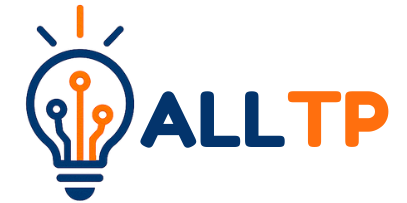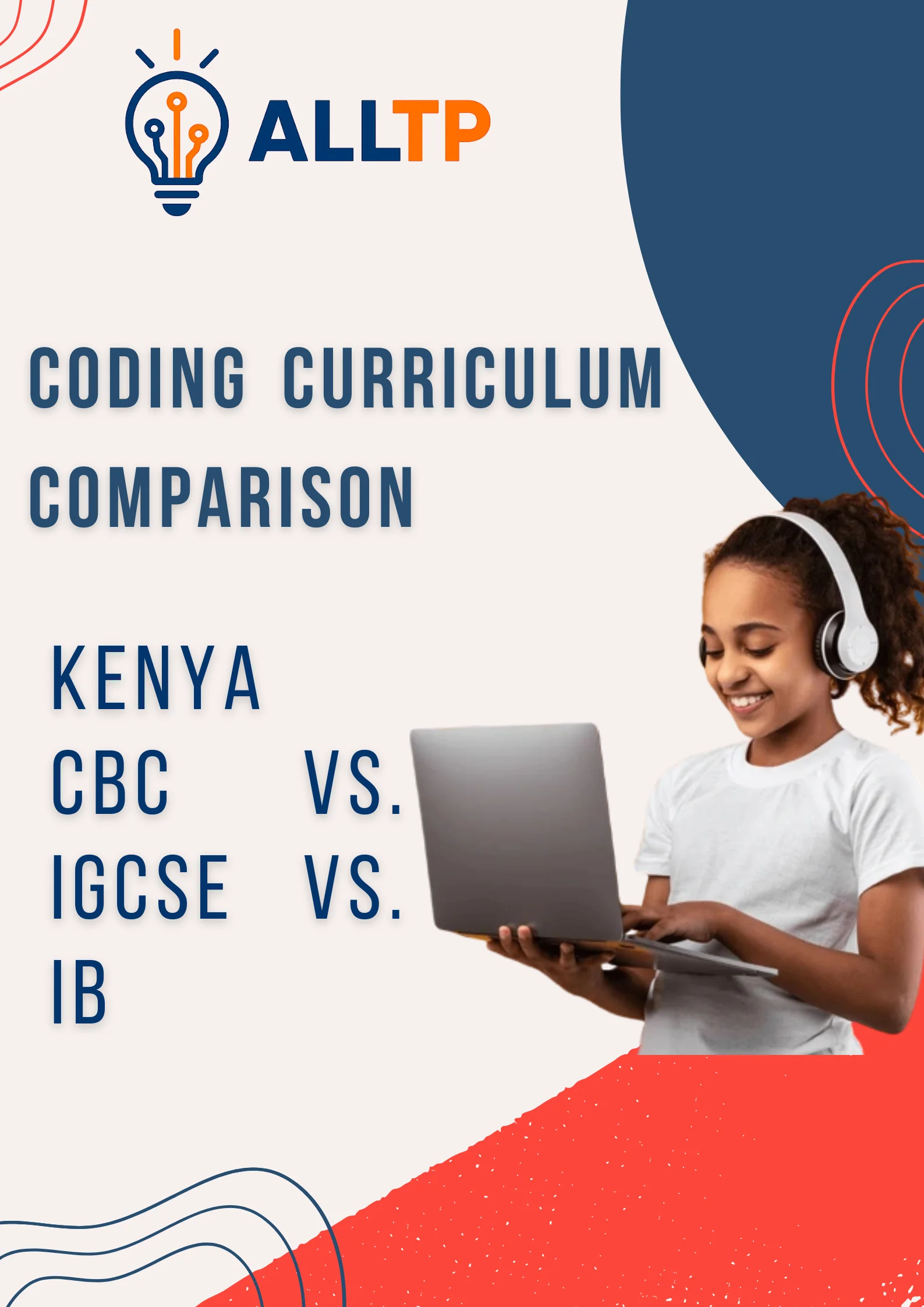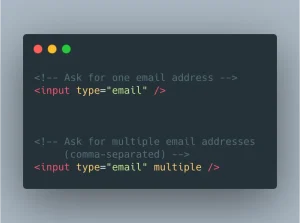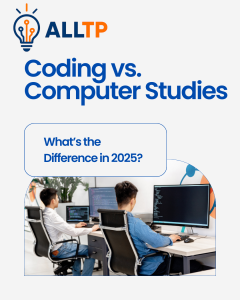In today’s rapidly evolving digital world, coding has become a fundamental skill, much like reading and writing. Beyond computer science, it shapes how learners think, solve problems, and innovate across all fields. Schools worldwide are recognizing that coding is not just for future programmers but for all students preparing to thrive in a technology-driven society.
This global shift toward digital literacy and computational thinking reflects the need for education systems to go beyond traditional learning. Students are now expected to understand how technology works, create digital solutions, and adapt to emerging tools that shape modern life and work.
This article compares how Kenya’s CBC, the IGCSE, and the IB curricula integrate coding and digital literacy, highlighting their structures, teaching approaches, and assessment methods. It also explores how education partners like All Things Programming are supporting Kenyan schools in bridging curriculum gaps and delivering affordable, high-quality coding programs aligned with CBC goals.
Overview of the Three Curricula
1. Kenya Competency-Based Curriculum (CBC)
The Kenya Competency-Based Curriculum (CBC) was introduced to equip learners with practical skills, values, and attitudes that prepare them for everyday life and the modern job market. Unlike the traditional content-based system, CBC focuses on developing competencies such as critical thinking, collaboration, creativity, and communication.
A key goal of CBC is to nurture learners who can apply knowledge to real-world problems. This emphasis aligns closely with the principles of coding, problem-solving, logical reasoning, and innovation.
Coding and digital literacy are embedded within CBC’s framework, particularly under the Digital Literacy and Science and Technology learning areas. From early primary levels, learners are introduced to basic computer operations, logical sequencing, and block-based programming. As they progress, the curriculum encourages exploration of coding for creativity, design, and entrepreneurship, supporting Kenya’s broader vision of a digitally literate generation.
In line with this approach, schools can explore practical strategies for integrating coding without additional staffing challenges, as outlined in How Kenyan Schools Can Integrate Coding Into Their Curriculum Without Hiring Extra Staff.
2. International General Certificate of Secondary Education (IGCSE)
The IGCSE curriculum, offered by Cambridge Assessment International Education, is globally recognized for its academic rigor and flexibility. It caters to learners aged 14-16 and is widely used in international schools across Kenya and beyond.
In IGCSE, Computer Science and Information and Communication Technology (ICT) are optional subjects that introduce students to the digital world’s theoretical and practical aspects. Coding concepts are taught progressively, covering programming logic, algorithms, data representation, and computer networks. Learners engage with languages such as Python, Visual Basic, or Java, depending on the school’s choice.
The IGCSE approach emphasizes technical precision and computational thinking, preparing students for further studies or careers in computer science, engineering, and digital innovation.
3. International Baccalaureate (IB)
The International Baccalaureate (IB) curriculum offers a continuum of international education through three main programs: the Primary Years Programme (PYP), Middle Years Programme (MYP), and Diploma Programme (DP). Each stage promotes inquiry-based and interdisciplinary learning that connects technology with creativity and critical thinking.
Coding is integrated across subjects, but is most prominent in Design and Computer Science. In the MYP, learners use design thinking to develop digital and physical solutions, ranging from app development to robotics. In the DP, students study advanced programming, computational logic, and system design, applying coding to real-world challenges and innovation projects.
The IB approach fosters inquiry, experimentation, and reflection, ensuring students not only learn to code but also understand its global and ethical implications. This makes IB graduates adaptable problem-solvers ready for higher education and future technologies.
Coding Curriculum Structure and Progression
1. Kenya Competency-Based Curriculum (CBC)
In the CBC, coding and digital literacy are introduced early, starting from Grade 1 through the Digital Literacy Programme (DLP). At this stage, learners explore basic computer use, digital safety, and logical sequencing through playful, hands-on activities.
As learners advance to upper primary and junior secondary, they progress to block-based programming using tools like Scratch, Blockly, and simple robotics kits. By Grades 7–9, students begin solving real-life problems through coding projects that combine creativity, environmental awareness, and entrepreneurship.
The CBC strikes a strong practical balance, emphasizing learning by doing rather than memorization. Learners demonstrate understanding through projects, portfolios, and performance-based assessments, reflecting how coding applies to daily life and community innovation.
Schools seeking to adopt similar approaches can follow the practical steps outlined in A Step-by-Step Guide to Implementing Our Coding Program
2. International General Certificate of Secondary Education (IGCSE)
In the IGCSE curriculum, coding typically begins around Year 9 or 10 (ages 14-16), depending on whether learners choose Computer Science or ICT as electives. The curriculum introduces foundational topics such as algorithms, programming logic, and system architecture before moving into structured programming.
Students learn to write code using text-based languages such as Python, Java, or Visual Basic, and they are guided through tasks like developing simple applications or debugging programs. The focus is both theoretical and practical, combining conceptual understanding with hands-on coding.
Assessment in IGCSE is formal and exam-oriented, consisting of written theory papers and practical problem-solving tasks. Learners are evaluated on their ability to analyze problems, design algorithms, and implement efficient code.
3. International Baccalaureate (IB)
The IB curriculum introduces coding progressively through its Design and Computer Science pathways. In the Primary Years Programme (PYP), learners engage with early computational thinking using games and visual coding platforms like Scratch and Tynker.
During the Middle Years Programme (MYP), students deepen their understanding by working on design projects that involve real-world applications, such as building websites, programming robots, or creating digital prototypes. The Diploma Programme (DP) expands this further with advanced programming in languages like Java or Python, along with topics in databases, networks, and system design.
The IB emphasizes a project-based learning model, where learners document their design process and reflect on their problem-solving journey. Assessments include portfolios, design journals, and final projects, encouraging critical thinking and creativity alongside coding proficiency.
Skill Development Focus
Key Learning Outcomes Across the Curricula
While all three curricula, CBC, IGCSE, and IB, integrate coding education, they differ in how they approach skill development. However, they share a common goal: helping learners build 21st-century competencies such as problem-solving, creativity, logical thinking, and collaboration.
Coding, in each system, is not just about writing code but about nurturing computational thinking, the ability to break problems into smaller parts, recognize patterns, and design efficient solutions.
Kenya Competency-Based Curriculum (CBC)
The CBC places strong emphasis on hands-on learning and locally relevant innovation. Learners apply coding to real-life community problems, such as developing simple digital tools for environmental conservation or entrepreneurship. This approach builds creativity, critical thinking, and adaptability.
Teamwork and collaboration are central, as learners often work on projects in groups, reflecting CBC’s competency-based assessment model. Through this practical orientation, the CBC nurtures innovation and design thinking, equipping students to use technology meaningfully within Kenya’s socio-economic context.
International General Certificate of Secondary Education (IGCSE)
The IGCSE focuses on developing technical proficiency and analytical precision. Coding is taught systematically, emphasizing correct syntax, structured algorithms, and efficient problem-solving techniques.
Learners are encouraged to think logically, debug code, and interpret data, skills that prepare them for future studies in computer science and engineering. The curriculum’s assessment style fosters accuracy and discipline, though it leans more toward exam-based mastery than open-ended creativity.
International Baccalaureate (IB)
The IB curriculum emphasizes the interdisciplinary application of coding and computational thinking. Students are encouraged to explore how programming connects with art, science, mathematics, and global issues.
This inquiry-driven model builds creativity, collaboration, and reflection, allowing learners to view coding as a tool for innovation and social impact. By combining design projects, research, and ethical discussions, the IB develops well-rounded learners who can think critically about technology’s role in society.
Teacher Preparation and Resources
Training and Professional Development Opportunities
Effective coding education depends heavily on teacher readiness. Across all three curricula, CBC, IGCSE, and IB, teachers play a crucial role in bridging theory with hands-on practice.
In Kenya’s Competency-Based Curriculum (CBC), the government, through the Kenya Institute of Curriculum Development (KICD) and the Teachers Service Commission (TSC), has rolled out ongoing professional development programs focused on digital literacy and ICT integration. These workshops equip teachers with foundational coding knowledge and classroom strategies for competency-based learning.
For IGCSE and IB educators, training is often facilitated through accredited international workshops and online certification programs. Cambridge International and the International Baccalaureate Organization (IBO) provide structured professional learning opportunities, ensuring teachers stay updated with evolving programming tools and pedagogical approaches.
Availability of Teaching Materials, Digital Tools, and Infrastructure
A major factor influencing coding instruction is access to teaching materials and technology infrastructure.
In CBC schools, many teachers rely on government-supplied digital devices, learning portals, and locally developed content. However, disparities remain between urban and rural institutions due to inconsistent access to computers, electricity, and internet connectivity.
IGCSE and IB schools generally have stronger infrastructure, including computer labs, fast internet, and licensed software, which allows for the smoother implementation of coding lessons. These schools often use a mix of physical and virtual learning environments to enhance interactivity and project-based learning.
Partnerships and Support from EdTech Platforms
To strengthen capacity in coding education, partnerships with EdTech organizations play a vital role. In Kenya, initiatives such as All Things Programming support CBC schools by providing tailored coding content, teacher training, and project-based learning resources aligned with national education goals.
Similarly, IGCSE and IB schools benefit from global platforms like Code.org, ScratchEd, and Google for Education, which offer open-source tools, curriculum guides, and collaborative learning spaces for both teachers and students.
Through these partnerships, educators across all systems gain access to continuous learning and the latest educational technologies, key ingredients for building a strong foundation in coding education.
Challenges and Opportunities
Challenges in Implementation
Each curriculum, CBC, IGCSE, and IB, faces unique challenges in integrating coding effectively into the learning environment.
For the Kenya Competency-Based Curriculum (CBC), one of the most significant barriers is the uneven distribution of ICT infrastructure across schools. Many public institutions, especially in rural areas, lack access to adequate computers, reliable internet, or electricity.
This makes it difficult for teachers to conduct hands-on coding lessons, despite the curriculum’s strong emphasis on digital literacy. Additionally, many educators are still developing confidence in teaching programming concepts, creating gaps in classroom delivery.
In the IGCSE and IB systems, the challenges are more related to accessibility, cost, and contextual relevance. These curricula are mostly offered in private and international schools, making them financially out of reach for many Kenyan learners.
Moreover, while they provide excellent exposure to global coding standards, their content can sometimes feel detached from local realities, focusing more on universal principles than on solving community-based problems relevant to Kenya’s context.
Opportunities for Harmonization and Cross-Learning
Despite these challenges, there are growing opportunities for collaboration and innovation across all three curricula.
Kenya’s CBC, with its focus on hands-on and competency-based learning, can gain from the structured rigor of the IGCSE and the inquiry-driven creativity of the IB. Likewise, international schools using IGCSE or IB can learn from CBC’s focus on local problem-solving and entrepreneurship, helping students connect coding to real community needs.
Partnerships with EdTech platforms like All Things Programming can bridge gaps in teacher training, resources, and student engagement. Such collaborations promote innovation, improve access to digital tools, and make coding education more equitable across all school systems.
By harmonizing these approaches, Kenya’s education system can grow stronger and more inclusive, ensuring every learner gains the digital and creative skills needed for a tech-driven future.
Future Outlook
1. Global trends Kenya can adopt
- Computational thinking across subjects: Schools are moving from isolated coding lessons to embedding computational thinking into math, science, and arts, so learners apply algorithmic problem-solving in different contexts.
- Project- and problem-based learning at scale: Real-world projects (community apps, environmental sensors, simple robotics) make coding relevant and motivate sustained learning.
- Micro-credentials and stackable certifications: Short, skill-focused badges (for teachers and learners) help demonstrate competence without waiting for long qualification cycles.
- Low-code and block-based to text-based progression: Start with visual tools (Scratch, Blockly) and intentionally transition learners to text languages (Python, JavaScript) as reasoning skills grow.
2. Roles: government, private sector, and NGOs
- Government
- Provide policy leadership and funding for nationwide ICT infrastructure (labs, electricity backups, connectivity).
- Integrate clear coding competency standards and assessment guidance within national frameworks.
- Fund scalable teacher-training programs and accredited micro-credentials for in-service teachers.
- Private sector
- Invest in public–private partnerships to supply devices, low-cost learning platforms, and internship pipelines for students.
- Sponsor regional maker spaces, hackathons, and industry-mentored projects that connect learners to real problems.
- Adopt apprenticeships and entry-level hiring schemes that value CBC/IGCSE/IB coding skills.
- NGOs and non-profits
- Bridge gaps in rural/underserved areas by delivering teacher training, localized content, and offline solutions.
- Pilot context-relevant curricula (e.g., coding for agriculture, health, local business) and scale proven models.
- Advocate for inclusion and monitor equitable roll-out, ensuring girls and marginalized learners gain access.
3. How blended and online learning can bridge curriculum gaps
- Blended models combine classroom mentorship with online, self-paced modules, which are particularly useful when teacher expertise or lab time is limited.
- Asynchronous, low-bandwidth content (downloadable lessons, SMS prompts, offline code sandboxes) allows learning without constant internet.
- Adaptive learning platforms can personalise pacing, helping students in IGCSE/IB streams reach higher technical depth and CBC learners build foundational skills.
- Teacher communities of practice (online forums, peer mentoring, lesson repositories) accelerate capacity building and spread classroom-ready projects.
- Industry-linked capstone projects delivered via online collaboration tools enable students from different curricula to work together on shared problems, promoting harmonisation and cross-learning.
4. Practical, next-step recommendations
- Prioritise teacher training + low-cost infrastructure before scaling advanced labs.
- Design a national progression model that maps CBC, IGCSE, and IB competencies so students can transfer skills across systems.
- Pilot blended, context-relevant projects in diverse counties, measure outcomes, then scale what works.
- Create incentives (grants, awards, recognition) for schools and partners that demonstrate inclusive, impact-focused coding initiatives.
Conclusion
Coding is now a cornerstone of modern education. It helps learners think critically, solve problems, and innovate in a technology-driven world. Whether through Kenya’s Competency-Based Curriculum (CBC), the International General Certificate of Secondary Education (IGCSE), or the International Baccalaureate (IB), integrating coding into classrooms is no longer optional, it is essential.
The CBC stands out for its hands-on, practical approach and focus on locally relevant innovation. The IGCSE offers a structured, exam-based framework that builds strong technical skills, while the IB encourages interdisciplinary learning and global problem-solving. Each system has unique strengths, showing how coding can nurture adaptable, creative learners ready for future careers.
Kenya’s education system can draw from all three models: CBC’s inclusivity, IGCSE’s rigor, and IB’s inquiry-based learning. With support from government, the private sector, and EdTech partners such as All Things Programming, coding education can become more accessible and transformative.
Investing in coding today means investing in Kenya’s digital future, one where every student gains the skills and confidence to thrive in the global economy.




